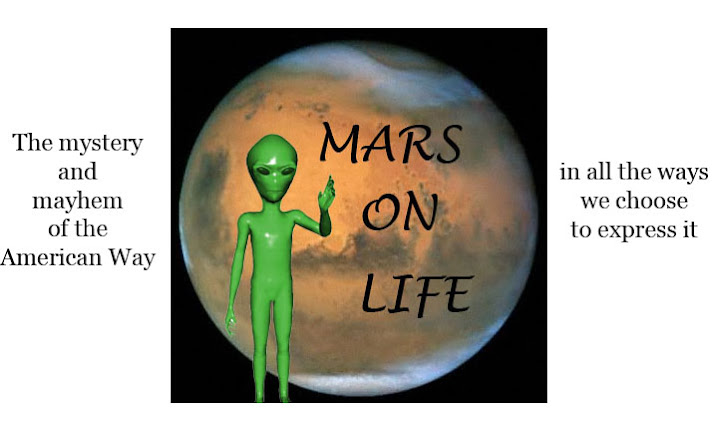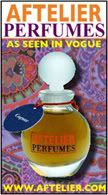 I remember the year 1968 clearly, even if I didn't see it that way. Nineteen sixty-eight was the year I got glasses, thick lenses in brown plastic frames that I got before I had a chance to see my teenage reflection without them. By the time I entered high school, I was used to being referred to as "Who? The girl with the glasses?"
I remember the year 1968 clearly, even if I didn't see it that way. Nineteen sixty-eight was the year I got glasses, thick lenses in brown plastic frames that I got before I had a chance to see my teenage reflection without them. By the time I entered high school, I was used to being referred to as "Who? The girl with the glasses?"
Due to the outstanding genetic fortune of others, I was the only person in school who needed to wear them.
Nineteen sixty-eight was also the year that Richard Nixon was elected to the White House, barely beating out Hubert Humphrey. By the time Nixon won the popular vote in November of that year, America had already witnessed the Tet Offensive, the murders of Martin Luther King, Jr. and Bobby Kennedy, the Soviet invasion of Czechoslovakia, Laugh-In, and Arlo Guthrie singing "Alice's Restaurant" at the Newport Folk Festival.
Historians like to talk about the end of innocence, and how bloodshed knocks some sense into a nation. You usually hear this type of rhetoric on the History Channel, spoken in a solemn drone. Naiveté is dead and someone else is to blame. Insert any war fought on American soil or with American intervention, the Depression, drugs, and Elvis Presley's pelvis. Innocence stripped away by bullets or rock and roll is still innocence lost.
Middle America of 1968 sucked on the fifties like a desiccating teat. Never had the generation gap been wider. The divide was blamed on the hippies, but the hippies were at best a sideshow attraction. Just like the Vietnam War, the hippies were one of those things that don't grow in our own back yards. Heads buried in sand, the short response to all that peace, love, and dope was disengagement. Still, the hippies were on to something, and that something was self-expression. As usual, the younger generation caught on first, but by 1968 the salesman next door was grooving to Jose Feliciano's Light My Fire and shopping the Sears catalogue for a Sansabelt leisure suit.
Language thrummed with idiom that reached critical mass on Laugh-In: groovy, you bet your sweet bippy, let it all hang out, sock it to me. Watching Laugh-In marked you as with it, "it" being defined as whatever was anti-establishment-antithetical to Spiro Agnew.
Laugh-In tackled subversion through a mod filter. Mod wasn't revolutionary and didn't require either the burning of flags or the eating of raw foods.
Mod started in London and spread to Europe and only then to America. Wearing go-go boots wasn't a political act; mod wasn't a movement to explore. Without political or philosophical message, it could not have a negative shape. Mod was simply a brief moment in style that lasted from 1964 until 1969.
As soon as the middle-aged middle class started wearing mini-skirts and longer sideburns, mod became just another paste-on pastiche. As a style, though, mod was arguably the most influential fashion movement of the 20th century. It spanned generations; you can see it in the television shows of the era. Compare My Three Sons with The Lucy Show. Beatle boots and hair in the first, flower-power dresses on a fifty-something redhead in the second.
Television and movies are as good a place as any to look at 1968, because where else but there can you get a good 360° at a culture through the eyes of commercialism? Photographs won't cut it; they're too honest and they don't pay the rent. Newspapers, magazines, and books tell stories that require creative abstraction; unless your lively imagination can conjure Françoise Hardy performing at the Savoy in her 16 kg chain-mail pantalons you've missed the bottom line .
Those pantalons were the work of Paco Rabanne, the Spanish designer who, along with Pierre Cardin, defined futuristic couture for the nascent jet set. In 1968 Rabanne was designing costumes for Barbarella, the sexy sci-fi romp to Sogo. Barbarella was a distillation of all Rabanne's wildest innovations with rhodoid (a science fiction-sounding plastic if ever there were one), chain mail, and le métal. Rabanne had been  molding and sculpting these materials and more since the early 1960s, but it wasn't until Barbarella that his concepts found a perfect commercial symbiosis.
molding and sculpting these materials and more since the early 1960s, but it wasn't until Barbarella that his concepts found a perfect commercial symbiosis.
Jane Fonda, with her nonplussed peachiness and custard-smooth body, suited Rabanne's vision of the artificial future. As Barbarella crashed her spaceship into yet another erotic scene, she changed from netting to fake fur to plastic. Plastics, as Dustin Hoffman was told the year before in The Graduate, were the future. For Rabanne they were old news; the designer had already eclipsed them and had gone on to body armor. Where the movie was chintzy and oversimplified, the forward statement of the costumes was not.
Barbarella was a low-rent cinematic glimpse into the type of campy naughtiness America would get up to if it weren't so...American. America didn't get camp, even camp as self-consciously done as Barbarella's. Special negative on any hint of decadence, especially European. The only American cognate to Barbarella as a character study was Leroy Neiman's mute Femlin, who possessed exactly the same degree of acting talent.
Despite its latter-day cult status, Barbarella is nowhere near a great film. Even with its spectacularly clumsy effects, it doesn't need to be. What it provides in the way of fashion retrospective is remarkable. Rabanne never translated well into American English; his startling use of industrial materials was a half century away from its time. Even in its molding spaceship, it may still be too anticipatory. Or too European. Accents make us suspicious. We are still bothered by innovation; we call it theatrical and impractical. And we still want romance.
Not everything needs realism and glasses. We may as well admit, though, that we like both sex and fashion without intergalactica.
Thursday, March 13, 2008
Barbarella: Rabanne's Intergalactic Runway
Labels:
Barbarella,
Paco Rabanne
Subscribe to:
Post Comments (Atom)









4 comments:
Great post, very much enjoyed this one. Even in terms of the decor style was very reflective of that certain fururistic image in style then. The film was directed by Fonda's husband at the time who was French - I forget his name, I'm sure you'll know. Have you read her autobiography? I've been reading it for ages, can't seem to get through it, but it's v. interesting in parts. She describes how painfully uncomfortable it was to wear the contraption they rigged up to make it look like she was flying.
I love this: "Jane Fonda, with her nonplussed peachiness and custard-smooth body, suited Rabanne's vision of the artificial future."
I love Paco Rabanne! Honestly, I don't know why he isn't discussed more often in popular articles...
Sorry I've been absent for a while...School is driving me crazy at the moment!
1990. Peach-coloured metal frames. Rounded egg-shaped lenses. 'Nuff said.
Adolescents and teenagers are so style-conscious these days. Fashion is so accessible to them. I wonder how this will be reflected in their interest in fashion as they get older. It seems a lot of people interested in fashion, at least in the blog world, describe their teenage years as awkward. I think that gives a sense of distance, but also fearlessness. The rejected going on to reject the mainstream is what avant garde is all about, isn't it?
Post a Comment